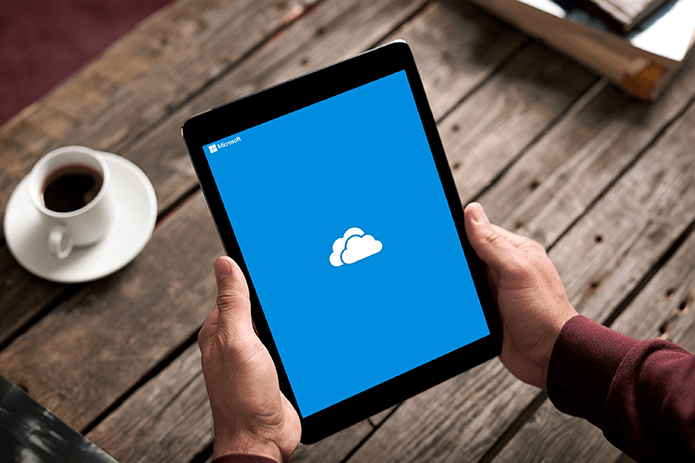There are two reasons for Microsoft OneNote’s striking popularity. First, it’s completely free to use. And second, the software is available everywhere. You can access the notes on all popular platforms: iOS, Android, Mac, Windows, or the web. The list below should come in handy for every OneNote user. Let’s get started with the best tips on OneNote.
1. Enable Dark Mode
OneNote supports dark theme on all the major platforms. If you regularly work on OneNote at night, enable the dark mode to reduce eye strain. You can read our dedicated post to enable OneNote dark mode on any device.
2. Use OneNote Keyboard Shortcuts
We always recommend memorizing keyboard shortcuts to fly through the software functions. Microsoft OneNote is no exception here. The software supports a bunch of keyboard shortcuts on Mac and Windows.
With the help of keyboard shortcuts, you can quickly highlight words, insert links, date, and time, search through notes, and more. Read and master the OneNote keyboard shortcuts from our previous post.
3. Share a Page as PDF and Invite Others
There are three ways to share notes in OneNote. You can send a note as a pdf over an email. You can also copy a page link and share it with friends.
You can share an entire Notebook with others too. You should open a page in OneNote and click Share in the top right corner to select a suitable option.
4. Insert Tables
Using tables is a neat way to organize the relevant information. OneNote supports the table functionality by default.
Click Insert in the top menu bar and expand the Tables menu to select the numbers of rows and columns.
5. Use OneNote Templates
OneNote templates are available on Windows only. Instead of starting a note with black space, you can use the relevant template to manage a to-do list, take meeting notes, or organize the meal details.
You can click Insert at the top and open the Page Templates menu to check the default offerings from Microsoft. You can check the template categories from a sidebar and pick a perfect design for the new page. Or even download third-party templates from Web sources such as OneNote Gem. You can also create a custom template as per your preference.
6. Add Stickers
Did you know one can add stickers to the OneNote page to give it a personal touch? Microsoft has added a bunch of default sticker packs to use. There is a cat in suit, monkey, office drama, and Teamsquatch stickers on the desktop version.
Open Insert and select Stickers; the side tab shows the default stickers to use on a page.
7. Make Use of Drawing Capabilities
Microsoft has added a dedicated drawing section in the OneNote app. Select the Draw menu, and the section lets you choose from Pen, Marker, and Highlighter. You can also use the Eraser function, change the Ink color, and play with the Ink thickness from the menu.
If you are using Surface Pro devices or any Windows laptops with Pen support, use the Windows Ink function to write and draw directly on the page.
8. Change the Paper Style
OneNote lets you change the page style from the settings menu. By default, it opens up as a blank white page. Click View from the upper ribbon and change the paper color and style from the given menu.
It looks good and resembles a physical notebook with different colors and rules/grid lines.
9. Password-Protect a Section
You can password-protect a OneNote section to lock it from unauthorized access. Right-click on a section from any notebook and select a password-protect option. Add a password; from now on, you will need that password to access notes on every platform.
Remember, if you forget the password, there is no way to recover the section. We advise investing in a password manager to memorize all such confidential details.
10. Use OneNote Web Clipper
Microsoft offers a capable OneNote Clipper extension on major browsers. You can use it to directly bookmark a webpage to OneNote, clip a portion of a page, or save the entire article to OneNote.
Download OneNote Web Clipper
11. Use Mobile Widgets
Microsoft OneNote for iOS and Android offers widget functionality to view recent notes and quickly add new notes. You can long-tap the app icon on Android and choose widgets to check different options. OneNote for iOS also supports three home screen widgets.
12. Change Default OneNote Fonts
By default, OneNote sticks to Microsoft’s Calibri fonts at 12 size. However, you can change that. Open the Files menu at the top and select Options. You shall find an option to change the default font under the General menu.
The changes will only reflect on the new page, and won’t mess up the already added notes.
13. Edit or Add New Tags in OneNote
OneNote comes with several tags to bookmark, highlight, add to-dos, and more. You can click the Tags menu under the Home tab and check all the built-in tags. You can click customize tags and add new ones or remove unnecessary ones from your OneNote. You can also use tags to search your relevant notes quickly.
You can check our separate post to learn all about OneNote tags.
14. Change the Tabs Layout in OneNote Desktop
Not everyone prefers the old-style horizontal tabs. Thankfully, Microsoft has added an option to enable vertical tabs to closely resembles the old OneNote app. You can click the View tab and expand Tabs Layout. Select Vertical Tabs and check the new navigation style in action.
15. Transcribe Audio Files
Transcribe is a must-have add-on for students. You can either upload an audio file or start recording from the Transcribe menu to convert audio into text. The software is smart enough to separate each speaker from the audio file. You can access Transcribe menu under the Insert > Recording section.
16. Use Sticky Notes Integration
You can access your sticky notes right from OneNote desktop and mobile apps. You can click the notes icon at the top to access your sticky notes on the desktop. Mobile users can access the same from OneNote home. You can even edit and delete irrelevant sticky notes.
17. Organize OneNote with Subsections
OneNote lets you create several notebooks and add pages to relevant sections. You can also create a section group to organize all your sections neatly. Simply right-click on a section, click ‘New Section Group,’ and rename it. You can add several subsections to it and better manage your notes.
18. Use Math Equations
Microsoft OneNote is quite popular in the education sector. It’s good to see Microsoft supporting math equations right into the app. You can select Insert and open the Equations tab. You can add several built-in equations or write one using the Ink Equation menu.
19. Check OneNote Section History
OneNote lets you check the entire section history in the app. You can click the History tab at the top and select Recent Edits. Select a relevant timeframe and check all the page edits from the sidebar.
20. Sync Samsung Notes to OneNote
Thanks to Microsoft’s partnership with Samsung, you can sync Samsung notes to OneNote. Samsung notes are available under the sticky notes section on the desktop and mobile app. Although the implementation has several limitations, it’s still a handy workaround to check your Samsung Notes on the desktop. You can read our dedicated post to sync Samsung Notes with Microsoft OneNote.
Take Your OneNote Experience to the Next Level
The list above is just the tip of the iceberg. The software also supports math equations, a built-in reader, several themes, and more. And that’s not all. Microsoft also plans to integrate the newly launched Loop components with the OneNote desktop app.
The above article may contain affiliate links which help support Guiding Tech. However, it does not affect our editorial integrity. The content remains unbiased and authentic.




























